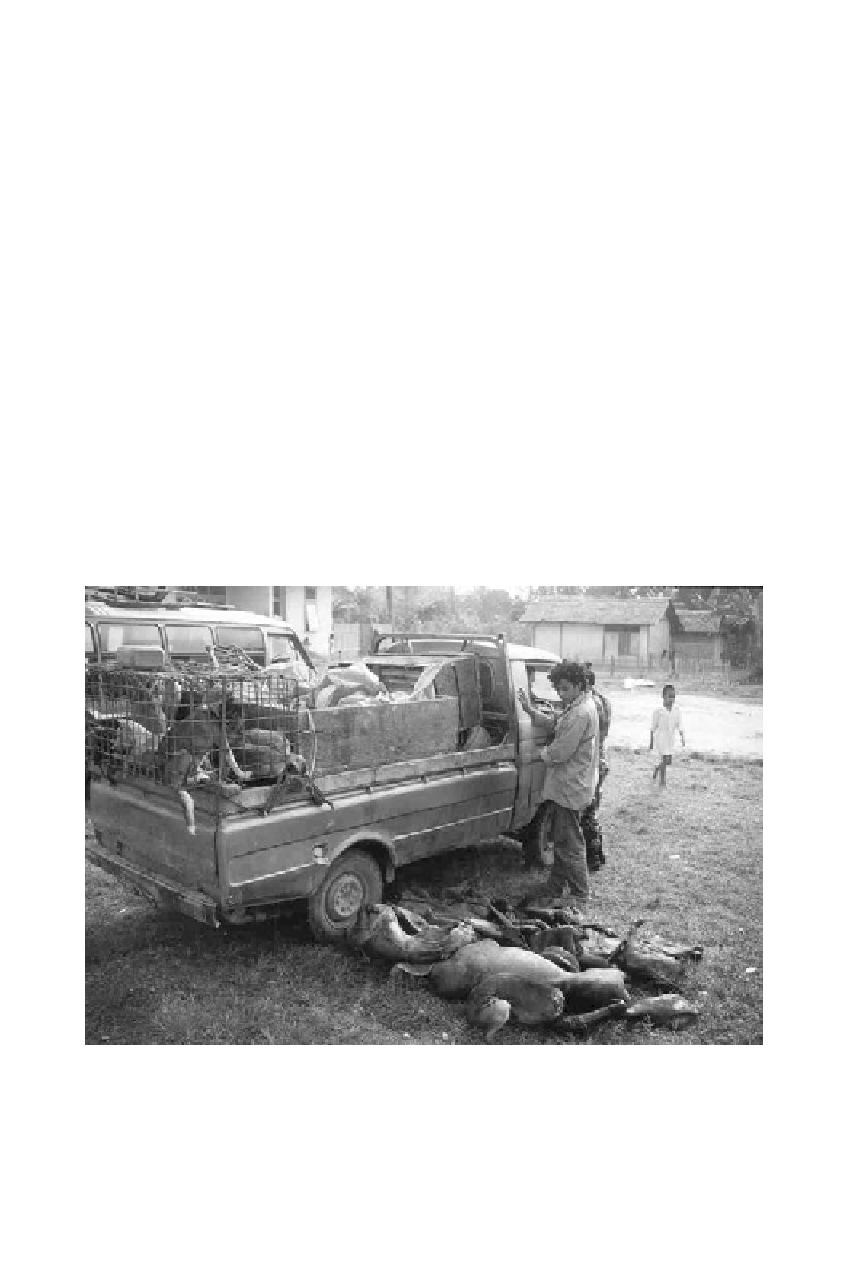Environmental Engineering Reference
In-Depth Information
Sulawesi that carrying live domestic dogs to the market for consumption is a breach
of animal welfare standards—in the UK, by contrast, the dogs in Figure 6.6 had to
be air-brushed out when the picture was used in a fund-raising campaign, for fear
that donors would be upset. The wild pigs carried alongside the dogs are only eaten
in the Christian tip of the island because the rest of the island, being Muslim, does
not touch or consume pigs, which are seen as unclean—this religious taboo has
acted like a refuge for the wild pigs, meaning that they have been hunted much less
intensely in the past than might have been expected (Clayton
et al
. 1997).
The
scope
of the approach encompasses two main types of interventions. The
first is highlighting the
non-use values
of nature. Under this heading are all the
public awareness and dissemination activities that highlight the beauty of the
natural world and our responsibility towards it. Another set of conservation
projects has a different approach—they build
community goodwill
towards the
conservation project or its organisation and personnel, rather than directly towards
the object of their activities. In this way the community feels predisposed towards
helping the organisation fulfil its aims. This is not the same as providing alterna-
tives, because the conservation organisation is explicitly not aiming to compensate
for economic value lost from refraining from harmful actions. Instead the
organisation demonstrates its commitment to the community, and to helping
them with their needs. In the longer term, the community might also then start to
Fig. 6.6
A wild pig dealer with his truck at a checkpoint in North Sulawesi. On the
ground are pieces of several endemic species (babirusa
Babyrousa babyrussa
,
Sulawesi Wild Pig
Sus celebensis
and dwarf anoa
Bubalus depressicornis
), on the
truck are domestic dogs also destined for market. Photo
©
Lynn Clayton.

